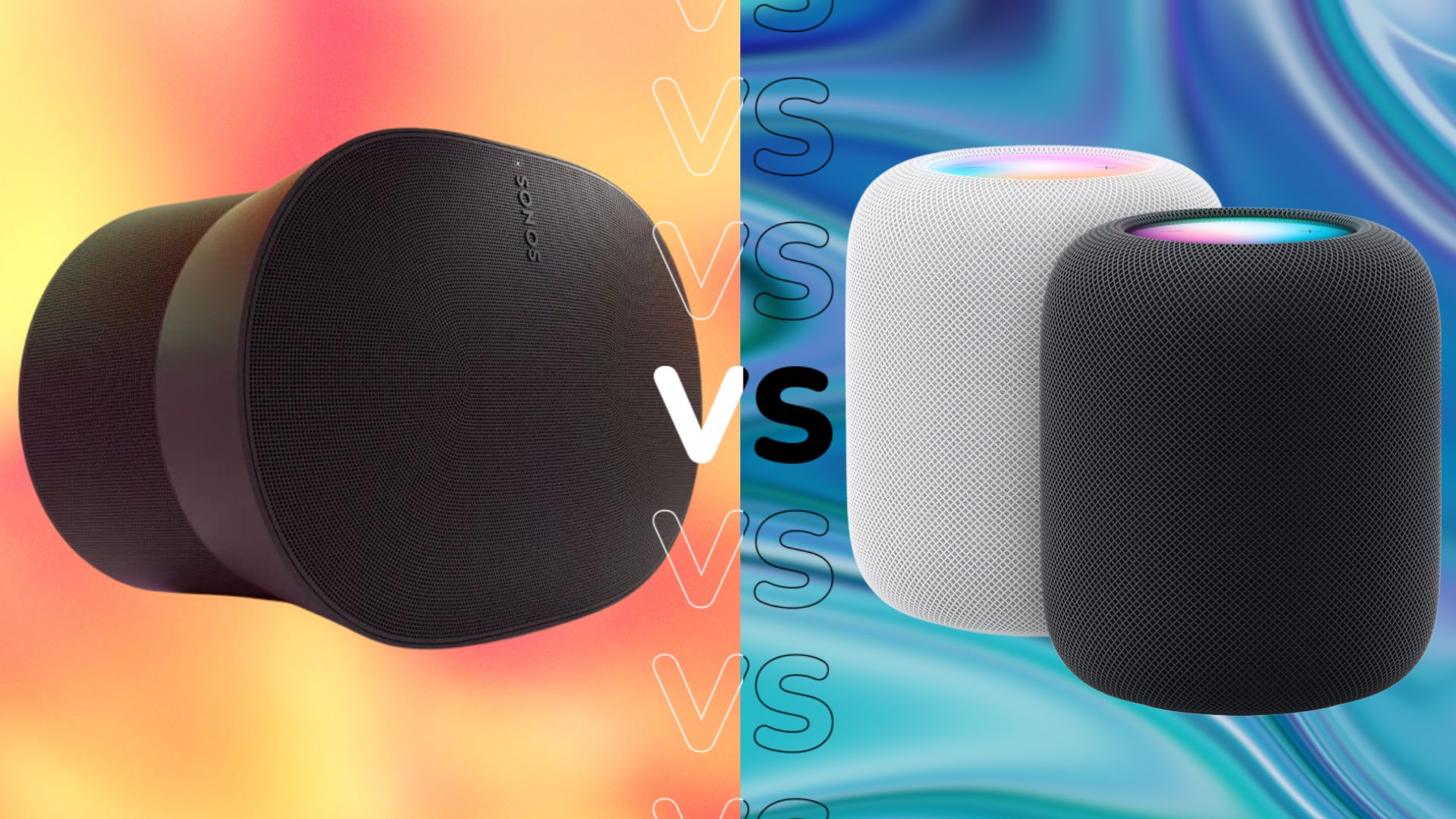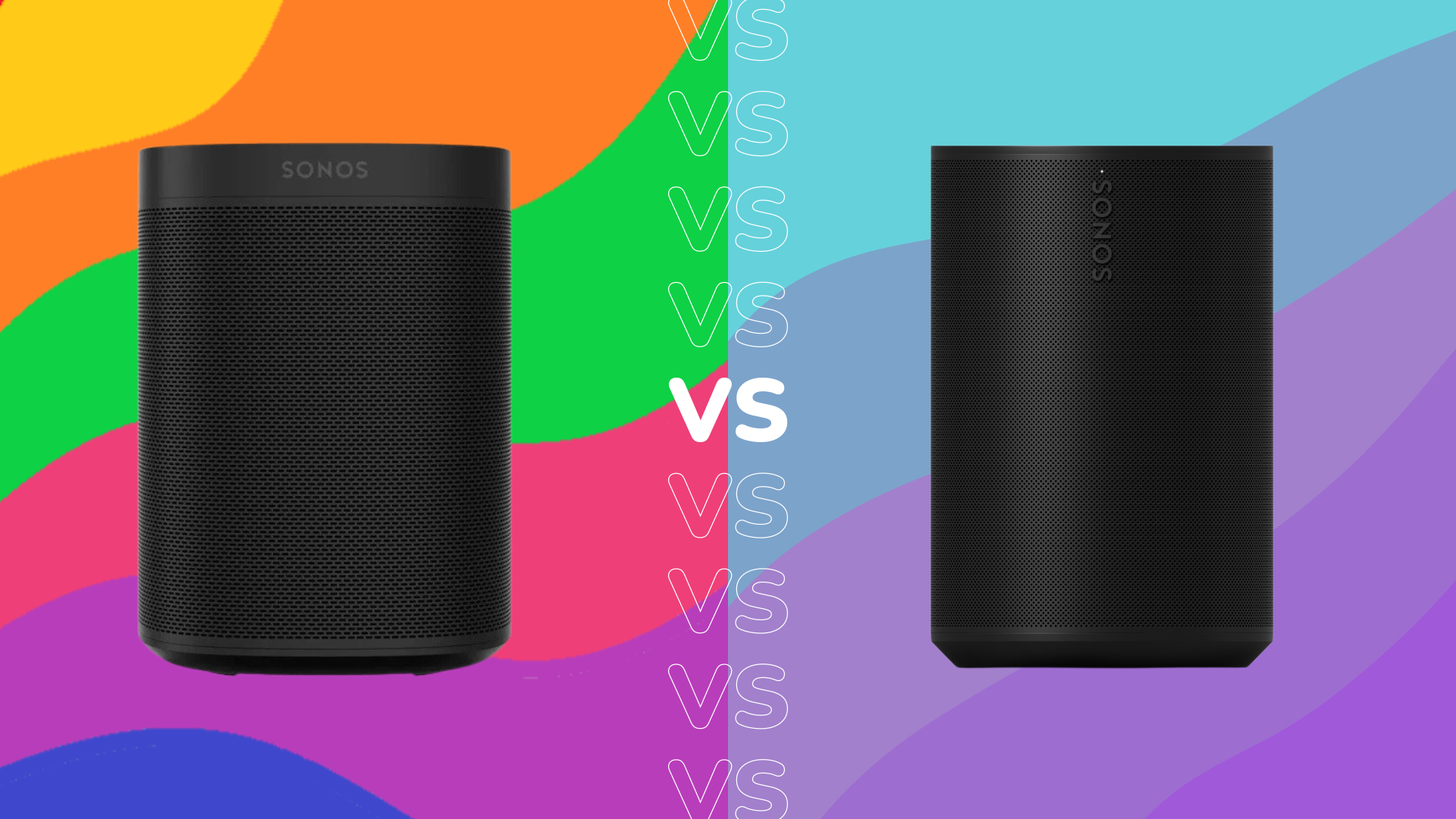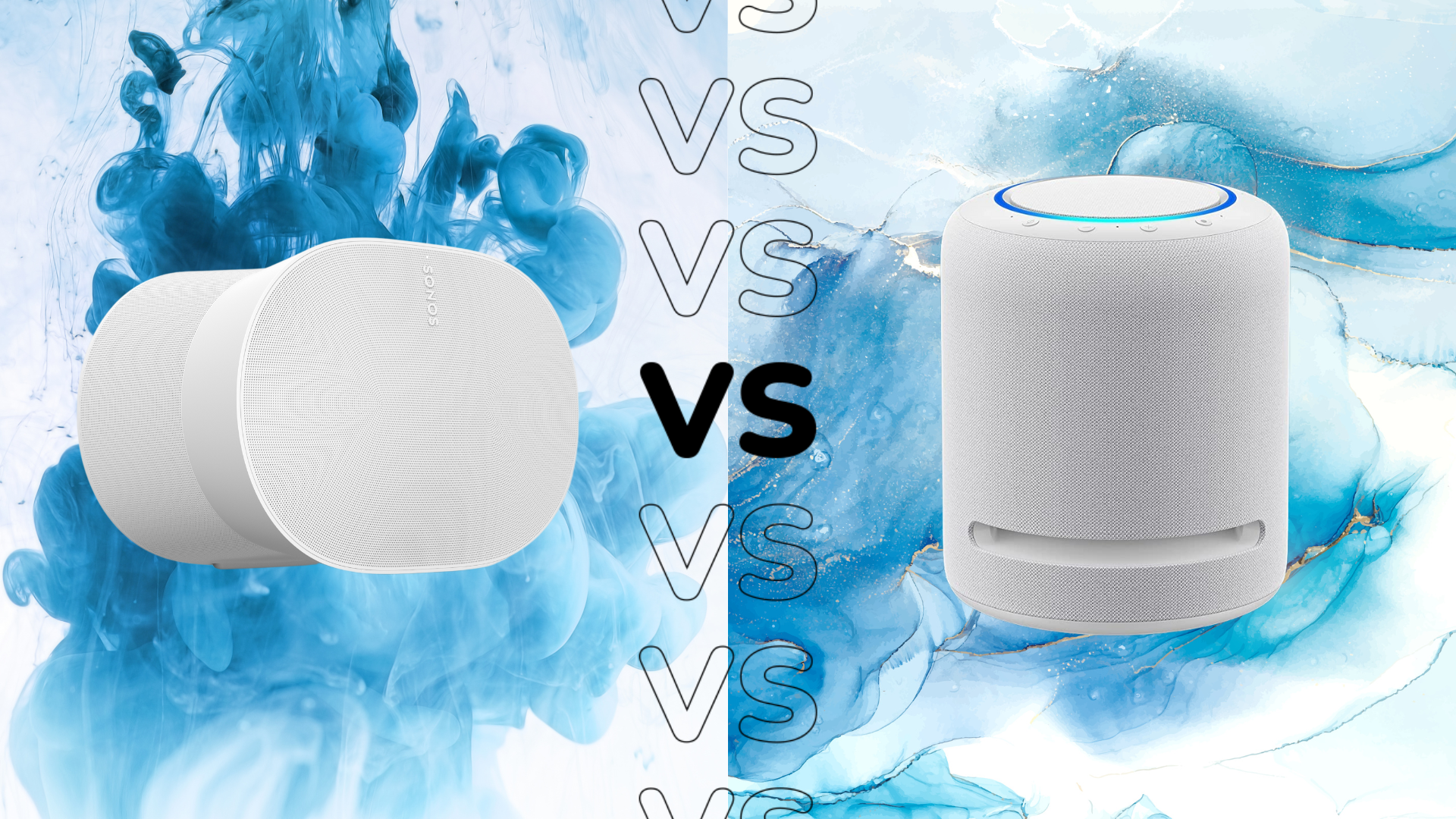Sonos Era 100 vs Sonos Era 300: What’s the difference?
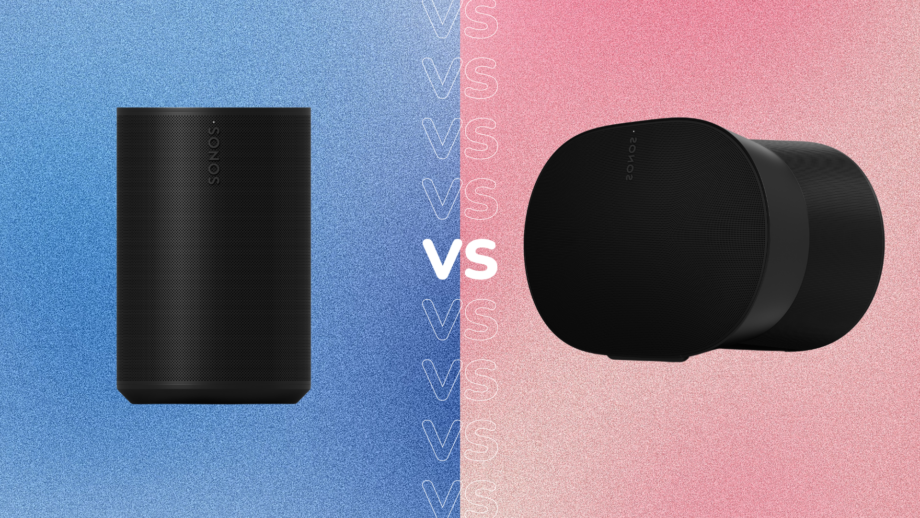
Sonos has added two new speakers to its range in the Era 100 and Era 300, but despite the almost identical names, there are some key differences between the two.
We’ve created this guide to highlight these differences, while also explaining which kind of use each speaker excels at. So without further ado, here’s everything you need to know about the Sonos Era 100 and Sonos Era 300.
Sonos Era 300 is designed for home theatre
The biggest difference between the Sonos Era 100 and 300 speakers is the latter can be used for both music and home cinema. It packs Dolby Atmos support for immersive spatial sound, with can fire audio to your ears to make it seem as if it’s coming from multiple directions.
The Sonos Era 300 can also be paired with a Sonos Arc and Sub (or a Sonos Beam and Sub) to complete the surround sound system for your home theatre.
Meanwhile, the Sonos Era 100 lacks Dolby Atmos sound, and is therefore incapable of spatial sound as a standalone speaker. Limited to stereo, the Era 100 is instead recommended as a speaker to fit in compact spaces such as a bookshelf.
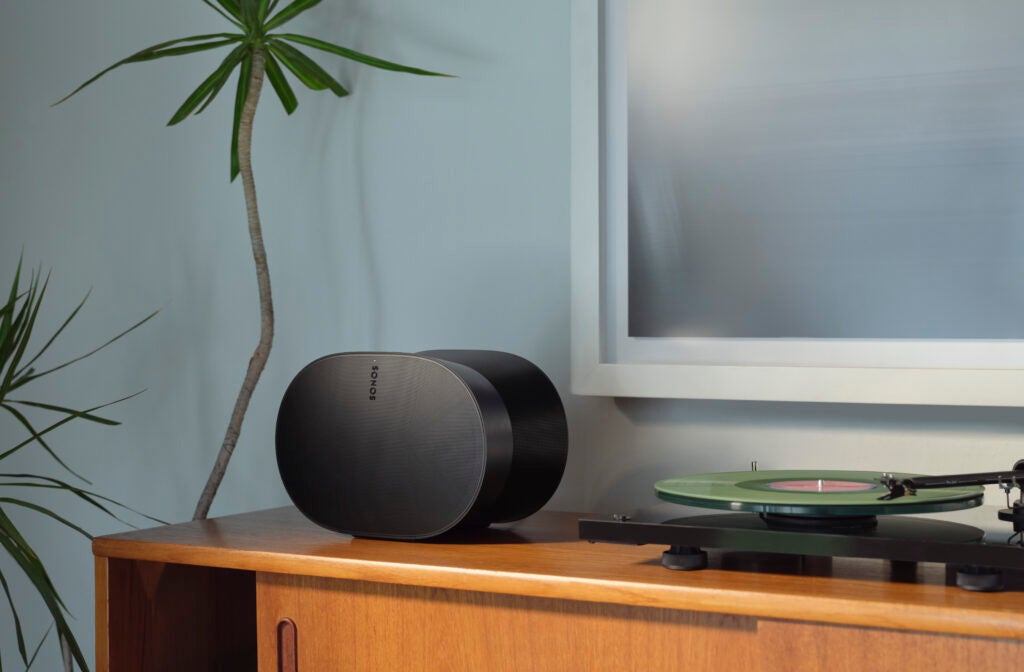
Sonos Era 300 is significantly more expensive
There’s a huge price gap between the Sonos Era 100 and Era 300, so much so that they’re not really direct rivals. The Sonos Era 100 is priced at $249 / £249 / €279, putting it in a similar ballpark as the Sonos One speaker.
The Sonos Era 300 costs a mighty $449 / £449 / €499, making it far more expensive – you can buy two Sonos One speakers with cash to spare at that price.
But with a more impressive and complex driver set-up and support for Dolby Atmos, it’s clear why the Era 300 is significantly more expensive than the Era 100.
Sonos Era 100 has fewer amplifiers and tweeters
You can tell by the spec sheet alone that the audio from the Sonos Era 100 isn’t quite as bold as that from the Era 300.
The Sonos Era 100 features 3 class-D digital amplifiers, two tweeters and a single midwoofer. Sonos has doubled the specs for the Era 300, with 6 class-D digital amplifiers, 4 tweeters and a pair of woofers to maximise low-end output.
We haven’t reviewed either device yet, but these specs indicate that the Sonos Era 300 provides the better sound quality, which is no surprise judging from the price.
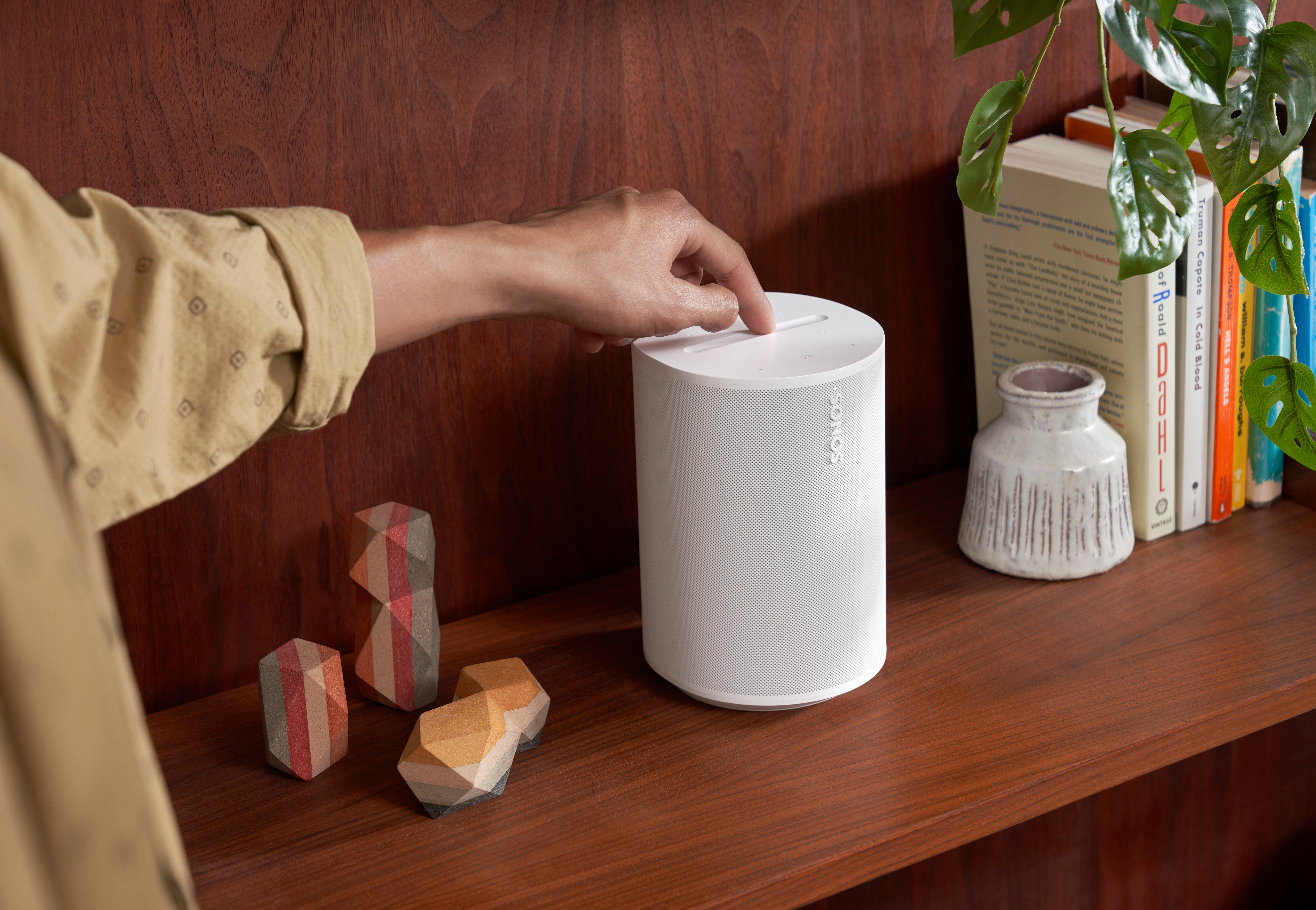
Sonos Era 300 is larger and heavier
The Sonos Era 300 is the bigger speaker of the two, with a width of 260mm and depth of 185mm. For comparison, the Era 100 measures in at just 120mm wide and 130.5mm deep, although it is taller.
As a result, the Sonos Era 100 may be the best option if you’re short on space, with Sonos suggesting this speaker is an ideal for a bookshelf.
It’s also worth noting the Sonos Era 300 is heavier at 4.47kg, compared to the Era 100’s 2.02kg heft. With this in mind, you’ll probably want to stick to sturdy platforms when finding a home for the Era 300.
Both offer Wi-Fi, Bluetooth, voice support and more
We’ve been focusing on the main differences so far, but these two speakers actually share a lot in common too. They offer the same connectivity options, with Wi-Fi 6 and Bluetooth 5.0 onboard, as well as a USB-C line in for a physical connection to your smartphone or laptop.
They also have capacitive touch controls at the top, allowing you to pause, play, skip and adjust volume easily. Both speakers come in black and white, despite featuring different designs.
And thanks to the built-in microphones, the speakers support Trueplay tuning and voice commands through the likes of Amazon Alexa. But you are able to mute the microphone at any time by toggling a switch at the back of the devices.



